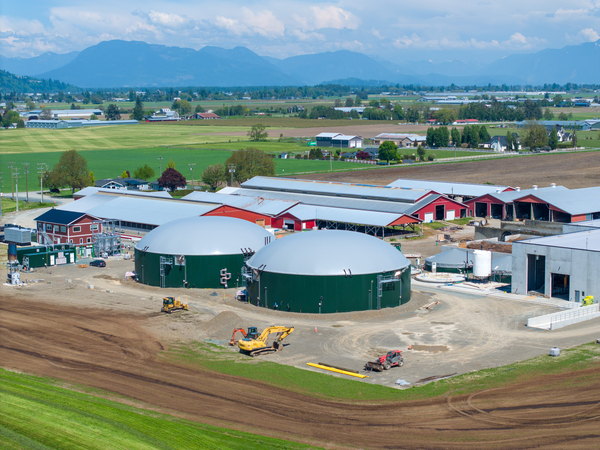The Future of Natural Gas: RNG
*The following article was provided by VICA-Member FortisBC
Can you use natural gas in homes while reducing emissions?
Yes, you can. Renewable Natural Gas (RNG)[1] is a sustainable, low-carbon energy that allows builders and developers to pursue natural gas systems without sacrificing emissions reductions. RNG is derived from organic sources, uses existing carbon already within the ecosystem and contributes fewer net new carbon dioxide into the atmosphere, making it a low-carbon fuel.

When bacteria break down organic waste from sources such as landfill sites, agricultural waste and wastewater from treatment facilities, it produces a biogas mostly made of methane. FortisBC works with local farms, landfills, green energy companies and municipalities to capture and purify this methane, which would otherwise escape into the atmosphere, to create RNG for its customers.
As RNG is derived from organic sources and blends seamlessly into the existing natural gas infrastructure, it decarbonizes the natural gas supply, displaces equivalent volumes of conventional natural gas and lowers greenhouse gas emissions overall. It also means RNG is a drop-in fuel. Homes and businesses can continue to enjoy the benefits of natural gas while helping reduce emissions by subscribing to FortisBC’s RNG program.
If you’re worried about the amount of RNG available, don’t be. FortisBC is working towards having 75 per cent of the natural gas in its system be either renewable or low-carbon by 2050. That’s why the organization is also exploring hydrogen research and pilot projects.
For more information on RNG, visit fortisbc.com/RNG.
[1] Renewable Natural Gas is produced in a different manner than conventional natural gas. It is derived from biogas, which is produced from decomposing organic waste from landfills, agricultural waste and wastewater from treatment facilities. The biogas is captured and cleaned to create Renewable Natural Gas (also called biomethane).